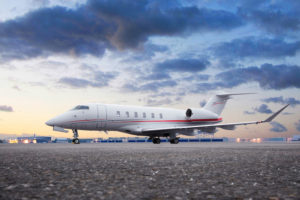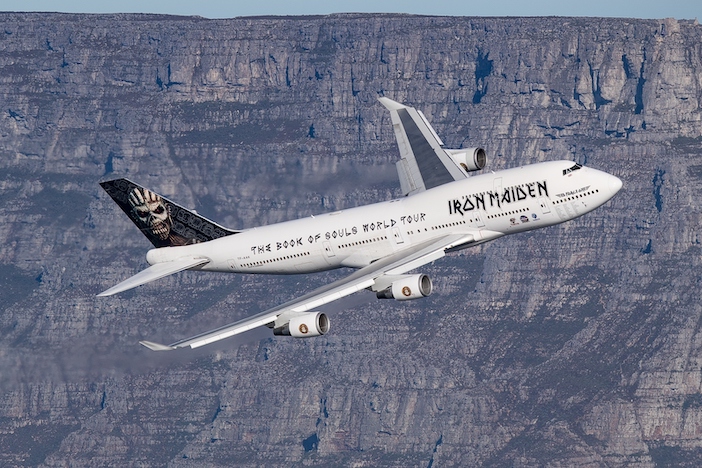Words by Keri Allan
Private aviation plays an important role in the music industry, helping rock and pop stars, their entourages and their equipment get from show to show in comfort and style.
Tours often involve busy schedules and private aviation represents a great way for musicians and singers to wind down before and after each show. It also ensures that artists can save as much time as possible between gigs by alleviating long wait times, delays and journeys to and from major airports.
“That’s why it works so well for the music industry and has been used by musicians and their management staff for decades,” says Patrick Margetson-Rushmore, chief executive of Luxaviation UK. “After playing a sell-out gig in Hollywood, the last thing a performer wants is to be mobbed on a commercial flight – especially if they have a performance the next evening in Las Vegas.”
Key advantages of private air travel for bands include convenience, comfort, security and discretion. Flight schedules can be tailored to meet their needs and private jets are able to use a much larger number of airports than commercial aircraft, allowing providers to create optimal routing that reduces ground transfers.
“The use of private terminals and fast-track services allows passengers to arrive at the airport 20-30 minutes prior to departure and provides a greater degree of discretion while on the ground – in some instances we can even arrange for the passengers to be driven straight to the aircraft,” notes Matt Feldon, account manager of ACC Aviation Group’s dedicated air charter division ACC Charter.
Rocking all over the world

Artists use private aviation for a wide variety of travel situations, from short hops to festivals or TV show appearances through to full international tours. Some of Air Charter Service’s (ACS) most popular requests have been for travel to the Coachella and Glastonbury Festivals for example, either via local airports or helicopters directly to the site.
Destination-wise there are the major touring markets and cities such as LA, New York and Nashville in the USA and then the big European cities including Paris, London and Berlin. But there’s nothing like the predictable seasonal travel you find in private leisure travel says David Young, managing director of Victor’s Private Office. A former artist manager, Young is behind several high-profile world tours, including Rihanna’s 777 tour and the Bacardi Triangle shuttle of 750 VIPs to a private island with performers including Ellie Goulding, Calvin Harris and Kendrick Lamar.
“I have noticed southern hemisphere markets opening up and the opportunities to tour close to year-round now exists with the rising popularity of music festivals and a global market. Wherever there are enough fans willing to fill big arenas, artists will go there and often by private jet.”
The majority of artists charter private jets ranging from 4-18 seats in size, with a heavy jet option used for transatlantic flights. ACS’ most popular options are the 13-seater Legacy 600 and 650 heavy jets.
“They come with a flight attendant onboard and are the most popular with bands because they can hold up to 400kg of luggage. That makes it really versatile because you can have the band and crew on the jet with the equipment in the back,” says Sophie Hesar, a senior account manager in ACS’ private jets department.
For transatlantic flights, ACC Aviation Group often provides a Bombardier Global 6000, as this can “accommodate up to 14 guests, offers the extended range you need, combined with a luxurious cabin experience, including day and night configurations,” says Feldon. “However, a band and crew embarking on a world tour would obviously require a much larger aircraft, anything up to 500 seats, such as an Airbus A380 or Boeing 787-900 Dreamliner. We also offer large commercial jets in VIP configurations, ranging from 56 up to 100 business class seats.”
No group is ever the same
Companies can receive requests from a variety of sources within the music world, from record labels and festival promoters through to direct contact with an artist’s agent or tour manager.
No trip or tour is ever the same however, and each conversation begins with discussing the artist or manager’s preferences, timings and budgetary constraints across the different travel parties. The A party is usually the talent, their family and handlers, the B party is often made up of dancers and backing band and then there’s also the crew.
“It starts with a conversation about what they’re trying to accomplish on the ground, taking a look at their tour schedule and sorting through what the touring party or parties see as their top priorities,” says Young. “Booking agents who arrange the touring artist’s live performances sometimes follow a logical route from city to city and other times simply commit to where the artist’s best financial opportunities await, as is often the case with the European summer festival circuit for example. Tour managers then have to work with us to connect the dots in what would not be a logical ground routing.
“Some artists choose to fly point-to-point, either before or after a performance, some simply supplement the occasional charter when the bus leg is just too long between cities. Superstar acts often chose to hub out of one market and cover a large geographic region, say, basing themselves in Paris or Berlin, but playing shows all over Europe, before flying back to the same base and hotel each night.”
Typical requirements for touring artists including private terminals and early and expedited check-in. When using a specific jet for a tour there may also be a request for livery and onboard branding, where an aircraft may be given a new look with some tour artwork – as can everything onboard from headrests to amenity kits. Many also request airport representation, where a dedicated flight representative is always there to see off clients and make sure requirements are met.
Partying’s a thing of the past

Fortunately for private aviation firms the stereotypical rock star attitude appears to be a thing of the past. Today’s artists are mainly looking for a comfortable spot to rest their head and healthy catering.
“There’s usually a big focus on the health of the artist when you’re arranging things, it’s not all parties and craziness,” says Hesar. “More and more bands are going green and looking after their health. Many aren’t drinking these days and perhaps are vegetarian. Healthy food is important, and they might have specific requirements like tea with lemon and honey or they might want a bed made up so they can sleep.”There is of course the occasional bad behavior, but this is clearly not tolerated, as Young points out.
“It’s ‘one-and-done’ should a rock star trash a jet or become nasty to a crew member,” he says. “The artists that stick around long enough to become our repeat customers are typically over their partying stage. Touring is their business and the private jet is one of their ultimate business tools, so there’s mutual respect.
“That said, early in my career I had a group of celebrities exhibit awful behavior, which damaged the jet and made the crew feel very uncomfortable. When I got the satellite phone call from the pilot in command, we decided to just cut the flight short and landed in Atlanta at around 3am. We told them to essentially ‘Hit the road, Jack’ and find their own way to Miami. We quickly de-escalated the situation and they ended up paying US$10K in damages.”
For the acts wanting to stay on top of their game it’s more detox from the day than party all night says Young, and their needs are more practical than outrageous. They’re after serenity, comfort and familiarity with their crew members to create a sense of consistency and a home away from home. Everyone wants a piece of the artists, so by the time they get to the jet they just want to chill out in an intimate and quiet setting.
“We do everything in our power to deliver this by selecting the best-in-comfort aircraft options and, equally as important, crew with a good ‘bedside manner’ who know how to behave around celebrities. Many of our bigger acts have their own cabin attendant they bring or suggest we use to deliver this desired familiarity and consistency,” he notes.
But diva demands are few and far between it would seem and actually, if anything, artists’ trips are not that luxurious or glamorous when compared to clients travelling for leisure.
“Sometimes its just a case of looking for the most cost effective way of getting a performer somewhere,” says Hesar. “They may need to be at Reading Festival in the morning and then be at Leeds Festival the same night. They’re not looking for the fanciest champagne, they’re just looking to get from A to B.”
Into the unknown

In truth the biggest challenges come not from the talent but from unknowns such as bad weather, NOTAMS, delays and cancellations and private aviation firms always need to be prepared for the worst and become experts at contingency planning.
“Because music tours involve strict schedules, careful planning and often span significant periods of time, they can create challenges for pilots and crew. There are several factors that can lead to schedule changes – cancellations, delays, bad weather, security – so it is essential that we are able to present a solution as soon as possible if an issue arises,” says Margetson-Rushmore.
And you still have to be prepared for absolutely anything, as Young points out.
“The ‘friends of the band’-type passengers added to an international itinerary who show up unannounced, exotic pets that are better classified as zoo animals – we’ve seen it all.
“You have to be an expert in contingency planning and be prepared to go into every movement with a plan B and C,” he concludes.





